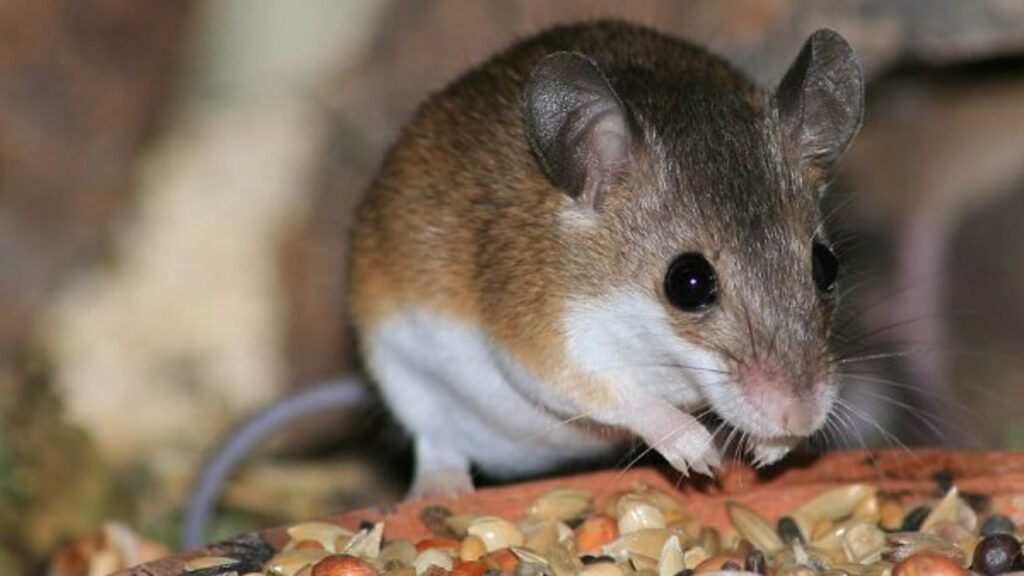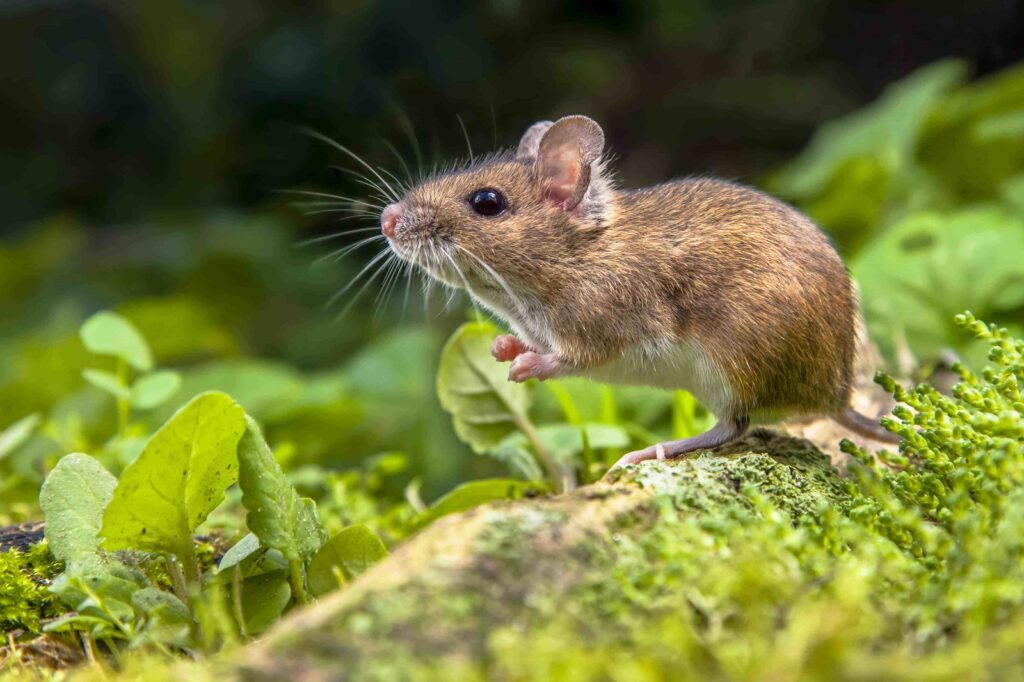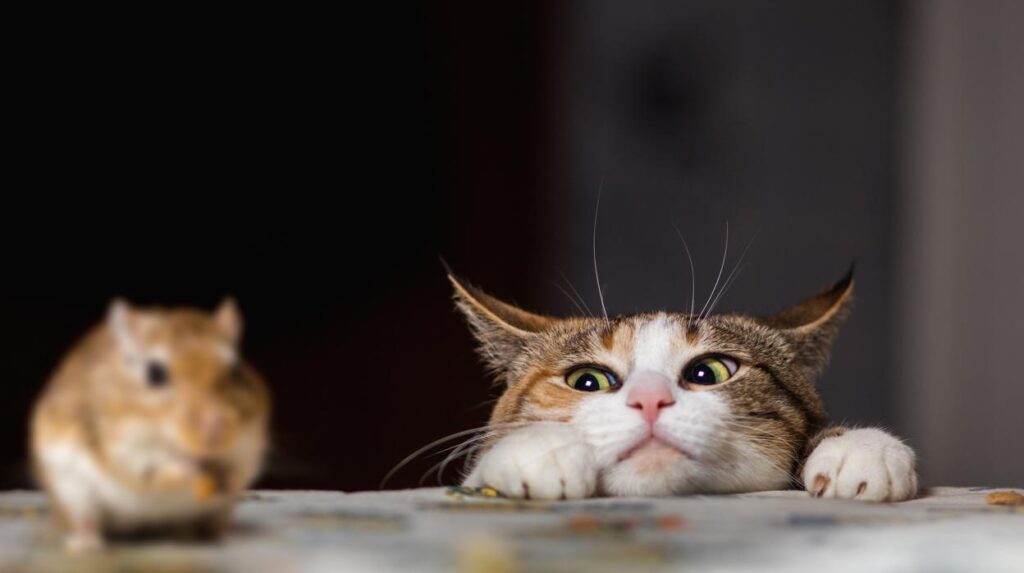In the natural environment, mice are predominantly herbivorous, but there are certain species that have had to adjust to their environment and have become omnivorous rodents. As pets, they can be fed in two ways, with a specific feed or with a varied vegetable diet. To learn more about what mice eat, we recommend you continue reading this curious article.

What do mice eat?
The most prevalent and well-known rodent is the house mouse, which is considered the second most widespread mammal in the world after humans. Mice are preferably omnivorous feeders, which means they eat a mixture of meats and vegetables. When they are still in the wild they eat a huge variety of seeds, vegetation and insects.
What, then, could we feed our pet mice? If we have a pet mouse, we must feed it a varied and balanced diet that includes fresh vegetables and protein. Or they could be provided with one of the food preparations available at the pet store. They should also be handed water and treats. A diverse diet goes a long way in keeping your mouse healthy.
Natural History
Although several species of mice live in the domestic environment, both feeding on the remains of humans, as pets and laboratory specimens, others populate rural areas. Since they have the ability to eat crops or human food reserves, numerous means have been developed since ancient times to reject their presence, among which are the domestication of predators such as cats, ferrets, genets and some mongooses.
In the natural environment they are preyed upon by various carnivorous mammals, diurnal and nocturnal birds of prey, lizards, snakes, toads, huge predatory invertebrates and other rodents. All this means that the life of a mouse rarely exceeds three months, although in captivity they can reach two years of age. Mice can distinguish between light and dark shades, but they cannot differentiate colors. To them, all things are painted in various shades of gray.
The house or domestic mouse could be a suitable pet, despite the fact that its primary interest for humans lies in its qualities as a laboratory animal: easy to feed, takes up little space, reproduces quickly and is a mammal, so it is a great Part of the results derived from the experiments on them often agree with those obtained later on in humans.
Feeding Pet Mice
As previously mentioned, the food that can be offered to pet mice must be varied and balanced, so its selection must be careful by the owners:
Pet Shop Food
The mouse food preparations that are sold in pet stores are composed of cereals, such as barley and millet, which are also abundant in fiber, as well as proteins, such as beans and soybeans. Added to the feed for these rodents, it is equally important to provide them with fresh fruits and vegetables, particularly crunchy ones, which are the ones they like the most.
Vegetables and fruits
Mice eat most known varieties of vegetables, but they tend to enjoy the crunchiest ones best. Vegetables like broccoli, carrots, and celery include a variety of vitamins, minerals, and carbohydrates that are critical to keeping your pet healthy. A piece of apple is also useful as a beneficial treat.
Crunchy vegetables and fruits also have another purpose. Rodents' teeth never stop growing, so the mice must be continually gnawing, or their teeth can grow so large that they can go through their mouths. Therefore, they need to be wearing them down so that this does not happen.
Proteins and Carbohydrates
In addition to crunchy fruits and vegetables, certain types of homemade food are safe for your mouse and can be fed with no problem, such as hard-boiled eggs combined with pieces of stale bread or cooked pasta. Surely he will enjoy this food much more than the same feed, even if you do not get him too used to it, because if not, he will not want the feed again.
Fresh water
Having fresh water is a basic thing for your little pet. There are special water bottles for rodents, which can be purchased at any pet store. The water in this kind of bottles will always be kept clean. Although it is required to change it periodically, this type of pet should be changed daily.
Recommended servings
The portion of food to be fed to the mouse depends on its size. The largest species can eat 8 grams of food daily, while the smallest species can eat a minimum of 4 grams. To know the precise amount of food that we must provide, it is better to have veterinary advice, with which you will be able to know if it is necessary to divide the amount of food into two doses per day, one in the morning and one at night.
Foods to Avoid
Certain foods are harmful to the mouse, such as chocolate, peanuts, acidic fruits, such as oranges and lemons, acidic vegetables such as onions and garlic, and it is also not recommended to feed the mouse raw meat as it can cause a reaction allergic in the animal. Skin irritation and diarrhea are the most common allergies.
What Do Mice Eat in Nature?
There are numerous different species of mice that live in the wild. Depending on their location and climate, some rodents are omnivores and others are herbivores. Most of these creatures have plenty of potential food sources in their environment. Daily food intake is about 15 grams per 100 grams of body weight, daily water intake is about 15 milliliters per 100 grams of body weight.
herbivorous mice
In the natural environment, most species of mice are herbivores, eating all kinds of fruits or grains from plants. A mouse's hunger is also satiated by seasonal plants. In the winter, when fresh fruit is nowhere to be found and no plants are present, herbivorous mice tend to devour tree bark, roots, oats, corn, or even root vegetables such as potatoes.
Omnivorous Mice
The most frequent species of mice can get their food from vegetation, such as seeds and fruits, as well as flower buds, mushrooms and other fungi that can be eaten. Added to vegetables, mice gobble up various insects, such as worms, centipedes and crickets, they can even eat snails.
carnivorous mice
The meat they sometimes consume comes essentially from carrion, sometimes belonging to other individuals of the same species. This cannibalism is usual in times of famine (often caused by the plagues of mice themselves by devouring all the resources of the environment) and sometimes some specimens have been seen in extreme situations that ate their own tail.
urban mice
Most mice live within a city or suburban area. These mice usually live in urban parks, or inside buildings, houses, cars, and everything else that they can take advantage of in a city. In this kind of environment urban mice are not very selective with their food, not that they have much to choose from. These rodents subsist primarily by scavenging on human garbage where they can get food scraps. They can also eat seeds, insects and plants from any city park.
baby mice
The young of wild mice subsist on the milk of their parents. As babies grow, they begin to eat corn, cereals or fruits. Even so, until these baby mice are fully developed, they alternate these foods with their mother's milk. The young depend on the food that their mother brings to her nest.
What animal eats mice?
There are few mammals that occupy a lower position, both in the food chain and in the food web, than the mouse. Almost all carnivorous or omnivorous species will relish a mouse when the opportunity arises. The mouse's predators, or its usual enemies, include numerous members of the feline family, from house cats to bobcats and lynxes, and nearly all members of the canine family, including coyotes and most of their older cousins. big and smaller.
Likewise, most of the predators that fly feed on mice, as do the carnivorous reptiles par excellence, such as crocodiles, vipers, constrictors and other snakes. Even large tarantulas occasionally prey on mice. Indeed, there are so many predators that feed on mice that we cannot mention them all in this writing. This is the reason why mice reproduce so quickly. If it took them 9 months to give birth like humans, they would have gone extinct thousands of years ago.
https://www.youtube.com/watch?v=DWmytkkTYh4
We also recommend these other items:



